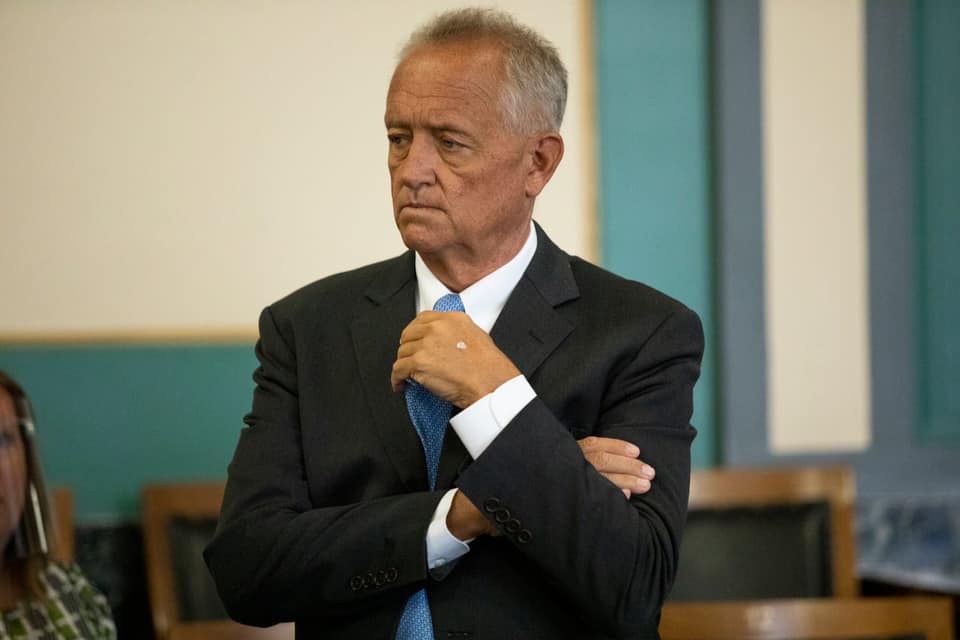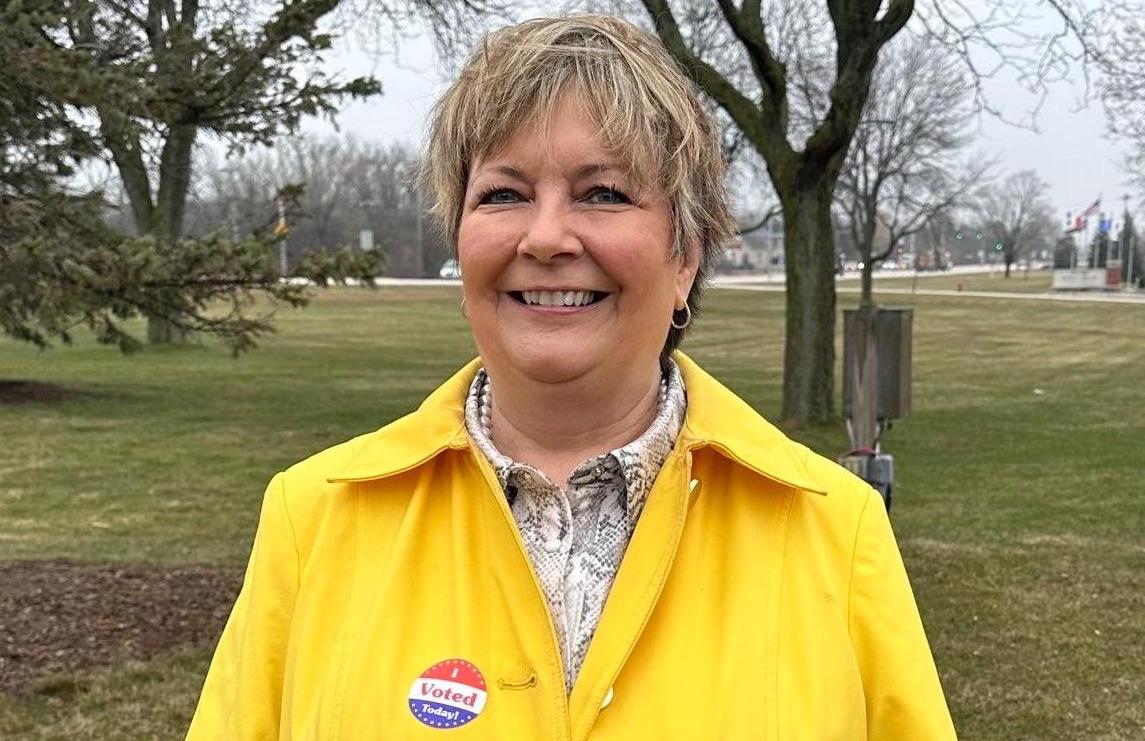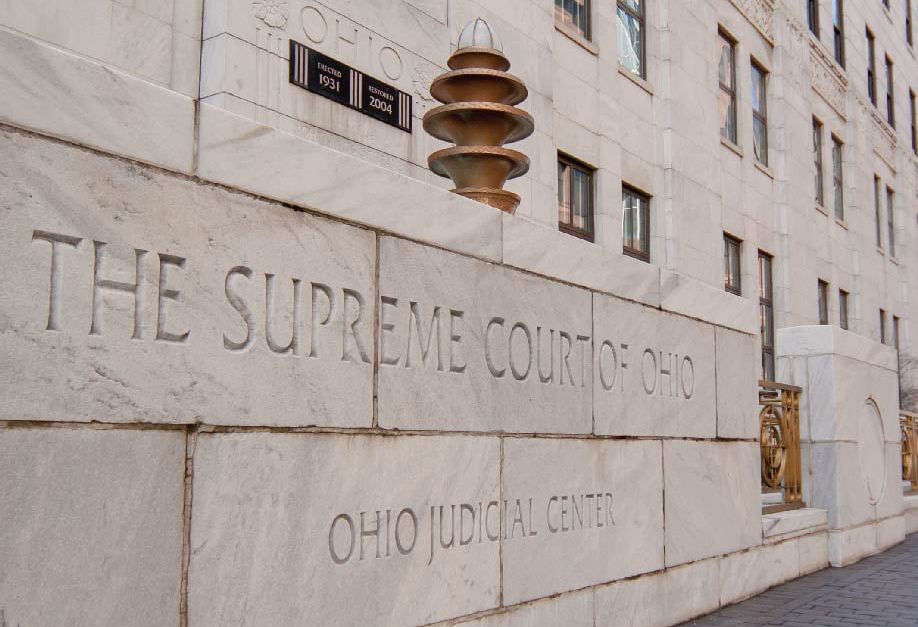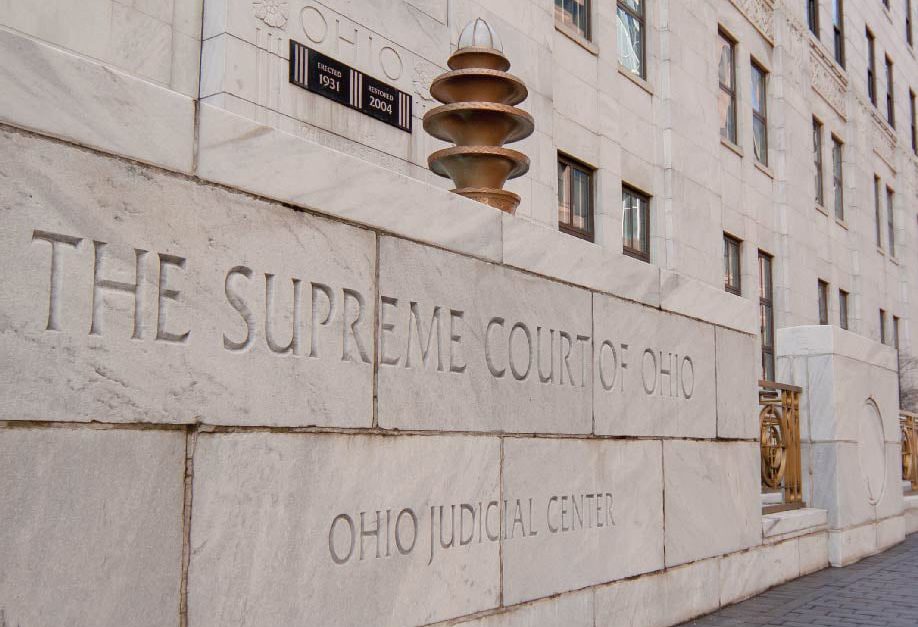Surprise After Supreme Court Saves What’s Left of the Voting Rights Act
“The court didn’t make it any easier to win voting rights cases. It just declined to make it much, much, much, much, much, much harder,” redistricting expert Justin Levitt explains in a Q&A.
Daniel Nichanian | June 9, 2023


John Roberts began targeting the Voting Rights Act decades before he joined the U.S. Supreme Court, and as Chief Justice nearly a decade ago to the day, in Shelby County v Holder, he wrote for the majority to gut a centerpiece of the VRA known as Section 5. So when the court agreed to hear Allen v. Milligan this term, observers widely expected him to complete his project and kneecap what’s left of the landmark civil rights law.
The case asked whether the congressional map Alabama adopted in 2021 is an impermissible racial gerrymander. After the legislature drew just one majority-Black district out of seven in a state that is roughly 25 percent Black, a lawsuit filed by voting rights groups argued that this violated section 2 of the VRA. A trial court sided with plaintiffs, but in early 2022, the Supreme Court stayed that ruling, let the state use the map for the midterms, and granted a review of the case. For voting rights advocates, the risk went beyond the court preserving Alabama’s map: they feared its ultra-conservative majority may render Section 2 altogether moot.
Instead, the court on Thursday issued a reprieve for the VRA. In a 5-4 ruling authored by Roberts—joined by Justice Katanji Brown Jackson, Sonia Sotomayor, Elena Kagan, as well as Brett Kavanaugh—the court reaffirmed Section 2 and used it to strike down Alabama’s map. The state now has to create a new district that will be likely to elect a Black Democrat, an outcome that may trigger similar results elsewhere in the South, starting in Louisiana.
Voting rights advocates breathed a sigh of relief at the surprise outcome, thrilled to see the VRA survive.
“I was completely floored,” Ruth Greenwood, who coordinated an amicus brief on behalf of the plaintiffs as director of Harvard Law School’s election law clinic, told me of her initial reaction. “It’s not just a win for the plaintiffs, it’s a full-throated defense of the way the Voting Rights Act has been applied to redistricting. It’s pretty fantastic.”
But they also remained wary as they cheered, warning that by chipping away at the VRA and other voting rights tools for years, the court has left them shadows of their old selves. The decision on Thursday does nothing to revive Section 5 of the VRA, which forced certain jurisdictions with a history of racist voter suppression to seek preclearance from the Department of Justice before drawing new lines or making other changes to their voting rules; absent that requirement, litigation often drags on for years after harmful changes are already into place.
“I view this outcome as a victory, but it’s a victory in the context of profound losses that still need to be addressed,” says Justin Levitt, a law professor at Loyola who is deeply experienced in redistricting litigation. Levitt worked at the DOJ at the tail end of the Obama administration and at the White House as a voting rights adviser in the early stages of Joe Biden’s presidency.
I talked to Levitt hours after the court’s ruling Thursday to break down Allen v. Milligan, racial gerrymanders, how Section 2 has been applied—and how it will be applied going forward.
In an extensive conversation, Levitt laid out conflicting emotions—calling the ruling a “status quo decision” that largely sticks to long-established precedent but also explaining why, in an era of dominant conservative jurisprudence, that alone feels momentous.
Most court observers expected the court to further gut the VRA. How surprised are you by this ruling?
I’m very happily surprised. And the reason for the surprise isn’t a knee-jerk reaction to the justices’ conservative disposition—this is a very conservative court, and it remains a very conservative court even after today.
I’m surprised because this court has not been particularly friendly to voting rights, particularly voting rights in the racial justice sphere, particularly the Voting Rights Act. I’m surprised because the chief in particular has expressed hostility to some basic tenets of the Voting Rights Act, including in opinions, including going back to his time at the justice department. And I’m surprised because, in the lead up to this case, a trial court gave an A-plus reading of existing precedent, and the Supreme Court in January of 2022 stayed that; that led to an expectation that the court was prepared to upend an awful lot of settled precedent. So all of the evidence leading up to this case pointed to the potential for a very bad ruling.
Let’s start with the basics: The court said Alabama’s congressional map violated Section 2 of the VRA. What’s the history of Section 2, and how does it assess such a map?
In 1982, Section 2 of the VRA was amended to say that maps with a discriminatory effect would be illegal. In a 1986 case, Thornburg vs Gingles, the court clarified what that would mean in practice: there would be a number of things the plaintiffs have to prove in order to make a successful case.
Condition one: The minority group or groups have to be big enough to be a majority in a single member district; if they’re not, that shows that the way the lines are drawn isn’t the thing keeping minority voters from political power.
The second thing you have to show is that there’s a difference in the way minority voters vote. The VRA doesn’t assume that, for example, Black voters and white voters are going to vote differently; but if you can prove that they vote differently, and that districts are aligned such that they lose most of the time, then that’s a potential problem.
The third thing you have to prove is that there’s a tie-in to discrimination; it’s not just dumb luck. This does not have to find a specific intent with respect to the lines: It can be discrimination elsewhere in the social or electoral structure that leaves minority voters at a disadvantage. The easiest way to see it is in literacy tests in the original VRA: It’s obvious if you keep a segment of population from being able to read and write, and then you design a voting rule that says you got to be able to read and write in order to participate, that the earlier discrimination feeds the later problem. The VRA is meant to break down these distinctions; if you have discrimination, and you have an electoral process that turns that discrimination into electoral loss of power, then you’ve got to fix the electoral loss power.
Many voting rights advocates worried that this case would obliterate the test you just laid out, but it did not. How would you describe the ruling’s significance?
The significance of today’s case is that it reaffirmed that, yes, this is how we do VRA cases. The stakes were that the supreme court could have changed the rules entirely; Alabama was asking the Supreme Court to change the rules in really radical ways—and the court said no.
The court didn’t make it any easier to win voting rights cases. It just declined to make it much, much, much, much, much, much harder. This is a status quo decision.
Don’t get me wrong, I’m very excited by today’s result, and I think voting rights activists are very excited by today’s results. But it’s a measure of the fetal position we find ourselves in as voting rights advocates that the court just doing its job gets us excited. The fact that the court didn’t blow up the entire structure, and the fact that that’s cause for celebration, shows you a little bit about how far the window has moved.
When it comes to those radical claims Alabama made in the case, what worried you the most going into the ruling? What changes are you most relieved to avoid?
There were so many. Alabama threw a bunch of grenades out on the ground, and the supreme court just declined to pull any of the pins. The theories that Alabama was putting forward would have radically changed the construction of the VRA across the board, and it shows how much the Overton window has shifted that people took Alabama seriously.
One of the things they claimed is that you need to show an intent [to discriminate], and not just effect; and that discrimination is the sole reason for the map looking like it did, not just one of the reasons. That’s a radical revision, not just of voting rights law, but of racial discrimination law generally—and of law on any discrimination. Alabama also argued that Section 2 of the VRA doesn’t apply to redistricting at all, which is patent nonsense.
This was first and foremost a case about Alabama’s map. So how did the court test it against Section 2, and what’s next for redistricting there?
The case in Alabama was whether there should have been a second congressional district drawn in Alabama responsive to Black voters there. Alabama said there should only be one; litigants said at this point there should be two.
So the way in which [the Gingles test] cashes out in Alabama: Condition one, there are enough minority voters to form a reasonable second congressional district responsive to the minority vote. Condition two, voting is exceedingly polarized by race. And is there a tie-in to discrimination? Yes, unfortunately, Alabama shows not only the lingering impacts of past discrimination, but present age discrimination that helps you understand why the loss of minority political power is not just happenstance.
So it requires a second district that responds to minority voters.
The trial court didn’t say you have to draw a district exactly here. It said to the legislature to go back and fix it. The legislature gets first shot, and the trial court will be watching very carefully.
Alabama’s map was adopted two years ago and was used in the midterms last year. How do you address the challenge that litigation takes so long that illegal maps are in place for years no matter the final outcome?
Voting cases are different because you can’t fix the damage afterwards. Discriminatory elections have consequences: They’re taking place, and they’re discriminatory, and that means that laws are being put in place and executive actions are being instituted in ways that are not legitimate. The other thing is that VRA cases are hard and complicated; they would take years even if the defendants weren’t fighting like crazy, and they’re often fighting like crazy
That’s why it was so important to have the preclearance regime of Section 5: That stopped the problem before it took effect. And since the Shelby County decision, absent action from Congress, that’s just gone. Folks are right to be frustrated, even with today’s decision.
The supreme court stayed the trial court’s decision against the map in early 2022, saying that it was too close to the election to change it. Could that happen again? Could litigation over a new map drawn by lawmakers drag on for so long that 2024 is held under other illegal lines?
Theoretically yes, because people in robes do what people in robes want to do. So could it happen? Sure.
But I think that’s extremely unlikely. The trial court was very careful in its original opinion, and there’s no shortage of attention now that the Alabama voters were due a map last cycle and they had to sit through an election that was discriminatory. The supreme court has now said the trial court was right, and the trial court is likely to give the legislature a real shot but it is also extremely likely to monitor the legislature’s work very carefully and demand proof that its new math satisfies the VRA and remedies the problem. I think that if the legislature engages in bad faith, particularly in drawing a map that does not fix the problem, the court will step in.
I’d like to look beyond Alabama to what the ruling signal for future cases. For one, there’s similar litigation in Louisiana and speculation of a broader domino effect in the South. What does this decision mean for other states?
I think of Louisiana as the next map standing, the one most directly related, and this will help the litigants in Louisiana proceed in a much more straightforward analysis of the Voting Rights Act than people were expecting. I don’t think it’s far to assume Louisiana is going to fall. There are also pending challenges in Georgia and in Texas, a somewhat related case in Florida (though it’s under the state constitution). So there are certainly other cases in the pipeline.
You’ve referred to the decision as preserving the status quo. But is there any small way in which it makes it harder or easier for future lawsuits to meet the Gingles test?
It’s mostly the same. There are little caveats in the opinion, caveats that were there in the law before, little pieces that I’m sure states will use to fight back against VRA claims; I don’t think any of them are new, they may be slightly differently phrased.
What’s an example of such a caveat?
The court emphasized VRA cases are hard. The chief said, look, this isn’t that many districts we’re talking about and you don’t have to worry about proportionality because no state has proportional representation for its communities of color. That’s a pretty big societal red flag, to not worry communities of color are represented consistent with their numbers in the population. And that also jumped out at me as recognizing the limitations of litigation under the VRA as currently construed; the court’s not saying you should bring and win a whole bunch of cases.
Justice Kavanaugh, a decisive fifth vote in the case, wrote a concurrence that qualifies some of the majority opinion; he states that race-based redistricting cannot “extend indefinitely.” Does that concern you, as to what it means for this future pipeline?
No. I mean, his concurrence reflects some wishy-washiness, but that wishy-washiness is all over the rest of his jurisprudence. This is a majority that surprised people because it’s a majority that most people were not counting on in VRA cases, and I think the skepticism leading up to today is still warranted for cases tomorrow.
Throughout our conversation, you’ve warned that the situation remains precarious for VRA litigation no matter today’s decision. Taking a step back, how would you assess the health of that law at this juncture—to what extent has it become a shadow of itself?
It’s part of why we’re in the fetal position. There’s absolutely no question that the VRA remains one of the crown jewels of the civil rights movement and that it is still one of the most powerful tools there is. And also, in its current state, it is nowhere near enough. Shelby County was a huge blow; the Brnovich decision made all Section 2 cases harder; and there have been a number of smaller decisions that have also made cases harder to prove and harder to win.
It’s part of why, like others, I view this outcome as a victory. But it’s a victory in the context of profound losses that still need to be addressed.
It’s part of why there was such a strong emphasis on restoring the Voting Rights Act in the John Lewis Voting Rights Restoration Act. To secure real justice, it still has to be a priority. You really need Congress to step in to set national rules.
The interview has been edited for length and clarity.
Sign up and stay up-to-date
Our weekly newsletter on the local politics of criminal justice and voting rights








